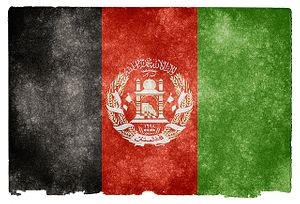The Turkmenistan-Afghanistan-Pakistan-India gas pipeline (TAPI) is a grand idea to bring gas from Turkmenistan — which has ample supply — to South Asia — which has immense demand. In between is Afghanistan, a war-torn country which stands to make millions in transit fees should the project ever be realized.
Recently, as Tolo News reported, the Afghan Gas Enterprise and ILF, an international engineering consulting firm, settled an agreement for the Afghan leg’s engineering design. At a signing ceremony attended by Afghan President Ashraf Ghani and other high-ranking officials, acting mines minister, Ghezal Habibyar said the project would have two phases which would take about four years to complete.
“The first phase of the project – which includes the security of the project, agreements, design, social and environmental study, demining, a survey of the pipeline’s route and expropriation will be completed in one year,” she said. The construction would presumably take the other three years to complete putting operation of the pipeline somewhere past 2021. That is if the deadlines aren’t extended and that seems like a very real possibility, given that the project’s long history is short on met deadlines.
The 1,735 kilometer pipeline, estimated to cost upwards of $10 billion, is planned to carry 33 billion cubic meters (bcm) of gas annually from the Galkynysh field in Turkmenistan to markets in Pakistan and India.
Afghanistan stands to make $400 million annually from the pipeline. According to a late 2015 Integrity Watch Afghanistan report, the country’s national budget for 2016 was set at $7.331 billion. Since 2001, foreign aid has supplied about 70 percent of the annual Afghan budget. An extra $400 million in revenue would be much appreciated in Kabul’s coffers.
Habibyar said at the ceremony, “The pipeline will change Afghanistan into a transit hub for Central Asia. It will be an important economic corridor for Afghanistan because other projects like a power transmission project, a railway project, industrial parts and an optic fiber project will be built along the TAPI pipeline route.”
Optimism has always surrounded TAPI, at least on the part of the governments involved. Turkmenistan is endlessly hopeful about the project, despite murky funding schemes and little evidence of actual on-the-ground progress. In December 2015, Turkmenistan broke ground on the pipeline’s construction, or so the state claimed. Pakistani media have carried reports recently that the country will begin its own work this month on design surveys and feasibility studies.
A major concern regarding the Afghan leg of the pipeline has been security. While only time will truly tell, it’s worth mentioning that in December the Taliban pledged to project infrastructure projects, like TAPI, in the country. The argument could be made that the Taliban — which still harbors dreams of once again running the country — is sincere in wanting these projects to proceed. If the Taliban find themselves in power in Kabul once again, they too will relish the extra $400 million.
The ADB last Spring said the project was “doable.”
A “doability” verdict and effusive government optimism are not completely worthless, but they aren’t sufficient to convince the project’s skeptics (myself, admittedly, among them). With Afghanistan and Pakistan just now beginning serious feasibility and design studies, not to mention the onerous task of demining and maintaining enough security to allow for construction, talk of deadlines is dealing with meaningless numbers.

































